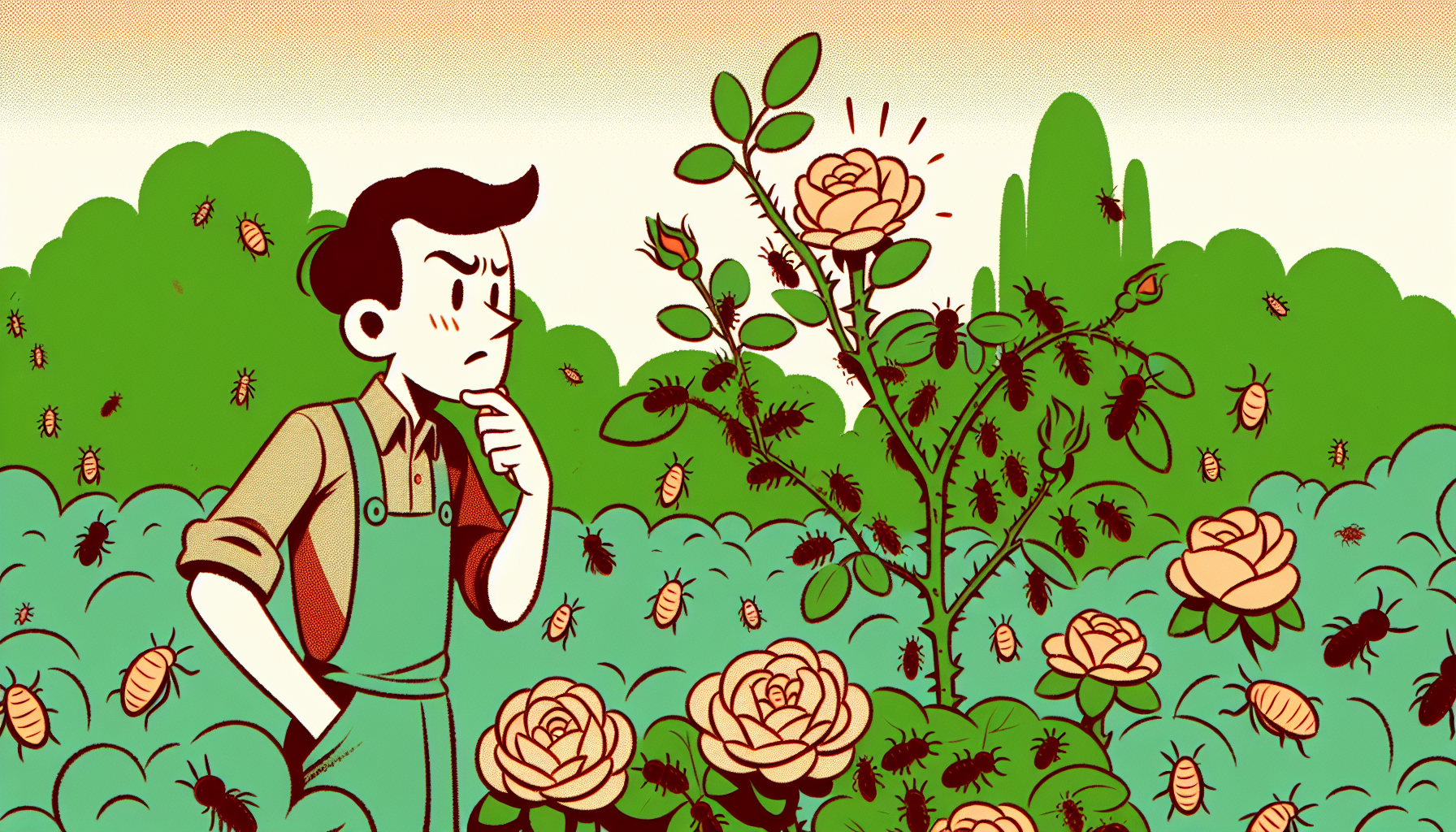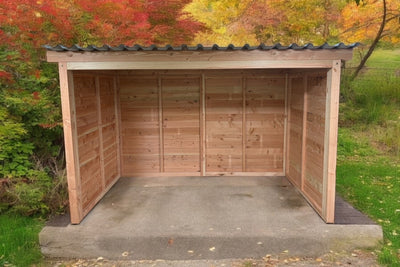Effective implementation of natural pest control in the Swiss garden
Gardening in Switzerland is more than just a pastime - for many people it is part of their everyday life. Maintaining a healthy garden here means working sustainably and showing consideration for nature, animals and fellow human beings. But whether in eastern Switzerland, the Bernese Oberland or Ticino - hardly any garden is spared from pests. Aphids, slugs and grubs can wreak havoc on even the most beautiful garden. Many Swiss gardening enthusiasts are therefore looking for natural solutions for pest control - without chemicals, but with expertise and consideration for the environment, children and pets.
In this guide, you will learn why natural pest control makes sense, which pests are most common in Swiss gardens and how you can achieve long-term success with simple methods such as beneficial insects, plant broths and intelligent garden planning. Sustainable, safe and effective - to keep your garden in balance.
Recognizing and understanding common pests in Swiss gardens

Switzerland's climatic diversity makes our gardens unique - but also vulnerable. Pests vary depending on location and altitude, but some species can be found almost everywhere. Vegetable beds at high altitudes, orchards on the Central Plateau and ornamental plants in city gardens or on terraces are particularly affected.
1.1 Identifying pests with certainty: typical damage pattern
Early detection is crucial for effective treatment. Look out for the following symptoms to reliably identify pests:
- Feeding holes or traces of mucus on leaves (often slugs or beetle larvae)
- Deformed shoots or curled leaves (indication of aphids or whiteflies)
- Sticky leaves due to honeydew (usually caused by aphids or scale insects)
- Wilting plants despite moisture (possible root problems caused by grubs)
- Fine webs on the undersides of leaves (clear indication of spider mites)
Regular garden inspections - preferably in the early morning or late evening hours - help to detect infestations at an early stage. A magnifying glass provides additional certainty in the diagnosis.
1.2 Effects on plants and harvest
Pests can weaken individual plants or affect entire garden sections. Young plants are particularly at risk as their growth is massively inhibited by infestation. Examples of typical damage:
- Slugs destroy freshly planted young lettuce plants overnight
- Grubs destroy grass roots and lead to bare patches in the lawn
- Aphids promote fungal diseases and transmit viruses
- Spider mites cause plant parts to dry out - especially in greenhouse crops
- Small butterflies such as codling moths significantly reduce fruit yields
In the case of severe infestation, it is worth acting quickly with suitable, natural countermeasures before long-term damage occurs.
Advantages of natural pest control in the Swiss garden
Even if chemical agents show quick results: The risks to the environment, soil life and health should not be underestimated, especially in home gardens. This is why many Swiss hobby gardeners rely on natural methods - in line with a mindful lifestyle and the recommendations of the federal government for natural garden management.
2.1 Advantages over synthetic pesticides
Biological solutions have a targeted effect and protect biodiversity. The most important advantages:
- No residues on vegetables or berries - safe for humans and pets
- Protection of bees, wild bees and other pollinators
- No contamination of groundwater by pesticide residues
- Avoidance of pest resistance
When used correctly, many household remedies are also inexpensive and reusable - another plus point for nature lovers.
2.2 Sustainable garden maintenance in Switzerland
In Switzerland, environmentally friendly gardening is a tradition - not only on organic farms, but increasingly also in private gardens. Many municipalities promote biodiversity, for example through planting campaigns or local environmental advice. In addition, the Federal Office for Agriculture prohibits the sale of certain pesticides for private use.
Anyone who protects their garden in a natural way is acting in line with this development - sustainably, in accordance with the law and with a view to the future. This also promotes biodiversity: Be it through flowering hedges, herb beds or insect hotels.
Natural methods of pest control at a glance
The range of chemical-free options is wide and varied. Depending on the pest, season and location, biological enemies, plant aids or mechanical helpers are particularly suitable.
3.1 Beneficial insects as helpers against pests
Many insects and animals naturally help you to control pests. These beneficial insects can be encouraged or introduced in a targeted manner:
- Ladybug larvae eat numerous aphids on roses, lavender or fruit trees
- Lacewings control thrips, mites and small larvae - nesting aids ensure colonization
- Ichneumon wasps are effective against moth larvae and small pests in greenhouses
- Runner ducks control snail populations in larger areas - ideal in permaculture gardens
- Birds and hedgehogs reduce grub and slug pressure if they find suitable retreats
Beneficial insects can be purchased from specialized Swiss suppliers such as biogarten.ch or Andermatt Biogarten. Make sure that you use species that are as appropriate to the location as possible.
3.2 Making home remedies and sprays yourself
Many plant-based sprays are easy to prepare - using materials from your own garden:
- Nettle liquid manure has a strengthening and deterrent effect against aphids and spider mites. Dosage: Dilute 1:10 with water and spray on
- Garlic spray helps against sucking insects. Allow the mixture of garlic, oil, soap and water to infuse for 24 hours and spray finely
- Neem oil spray is effective against lice, whiteflies and larval stages. Important: Mix fresh and use quickly
Apply all products early in the morning or in the evening - and not in direct sunlight to avoid leaf burns. Repeated application is normal in natural processes.
Plan natural control sensibly in the garden
To ensure that your measures are successful in the long term, integrate prevention and control into your garden planning right from the start - from raised beds to natural ponds.
4.1 Safety for children and animals
Even natural resources require a certain amount of care. The following rules apply, especially in family gardens:
- Careful labeling and safe storage of slurries or spray broths
- Avoiding sharp-edged barriers in barefoot zones - such as copper tape instead of glass splinters or eggshells
- Non-toxic plant selection in the play area - no foxgloves, spurge or laburnum
- Observation of pets after the use of certain products - e.g. garlic preparations
Plan safe zones where small children can play safely - for example with raised beds at a comfortable working height.
4.2 Design a garden structure for beneficial insects
A diverse, lively garden is the most effective way to prevent pest infestations. Pay attention to:
- Mixed crops instead of mono beds - e.g. tomatoes with basil or carrots with leeks
- Flowering strips with marigold, fennel or borage as attractants for beneficial insects
- Targeted nesting aids for lacewings, ladybugs or wild bees
- Keep a distance from compost - it must not be placed directly next to sensitive crops
Well thought-out arrangements and lines of sight also facilitate the early detection of new pests - an important advantage in everyday life.
Long-term healthy garden through natural care
Even after successful pest control, the garden should be regularly maintained and stabilized. This is the only way to maintain the balance and prevent new infestations.
5.1 Avoid mistakes and apply effectively
Even natural remedies have their limits. These points are crucial:
- Do not overdose - this harms beneficial insects and weakens the plant
- Use in suitable weather conditions - windless, cool and without direct sunlight
- No frequent digging - this disturbs soil life
Experience and observation often replace costly interventions. Keep a garden diary for a better overview.
5.2 Sustainable strengthening of plants
Healthy plants = fewer pests. Promote vitality with:
- Regular mulching and composting for good soil
- Alternating crop rotations in the vegetable area
- Robust, regionally recommended varieties with good resistance
- Effective microorganisms to promote soil life
If you garden with foresight, you will need to intervene less often in the long term - and save time and money.
Conclusion: Gardening naturally means acting sustainably
Whether allotment garden, city balcony or large family garden: Natural pest control is the most sustainable choice in Swiss gardens. It protects people, animals and the environment - and often produces surprisingly good results.
With simple household remedies, appropriate planting and the targeted use of beneficial insects, your garden will remain healthy and vibrant. Benefit from the knowledge of experienced local providers and rely on tried and tested methods. Not only will the greenery grow, but you will also enjoy your garden.
Start your garden project now - natural, safe and successful. Tips, ordering beneficial insects and background knowledge can be found at your Swiss specialist retailer or in the garden blog at garden.ch.


